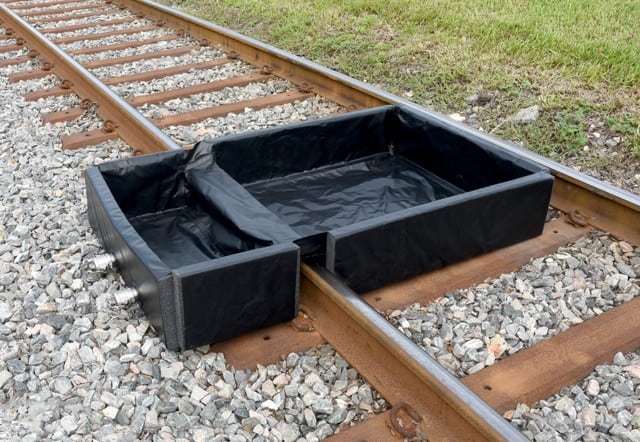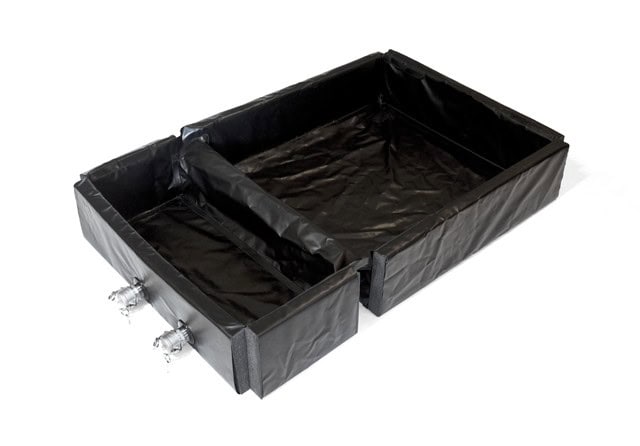Railroad track berms might not be the first thing that comes to mind when considering railway infrastructure. However, these structures play a critical role in both the environment and safety management, especially when it comes to tanker spills. Understanding what railroad track berms are and their significance in preventing environmental disasters is essential for both railway companies and communities near rail lines.
What Are Railroad Track Berms?
Railroad track berms are raised barriers built alongside railway tracks. They are designed primarily to contain and control spills, particularly from tanker cars that carry hazardous materials. Berms can be constructed from various materials, including soil, gravel, or synthetic liners, depending on the specific needs and location.

Design and Construction of Berms
The design of a railroad track berm is carefully planned to ensure it can effectively contain spills. Key factors in berm design include:
- Height and Width: The height and width of a berm must be sufficient to contain potential spills. The specific dimensions depend on the volume and type of hazardous materials transported.
- Material: Berms are usually made from compacted earth or gravel, but in some cases, synthetic liners are used to prevent seepage into the ground.
- Slope: The slope of the berm is designed to direct spilled materials into a containment area, minimizing the impact on the surrounding environment.
Why Are Berms Important?
Berms serve several critical functions that make them indispensable in railway safety and environmental protection.
- Containment of Spills: The primary function of a berm is to contain spills from tanker cars. By preventing hazardous materials from spreading, berms protect both the environment and nearby communities.
- Environmental Protection: Berms help prevent contamination of soil and groundwater, reducing the risk of long-term environmental damage.
- Safety for Communities: By containing spills, berms reduce the risk of fires and explosions, which can occur if flammable materials leak from tanker cars.
The Role of Berms in Tanker Spills
Tanker spills can occur for various reasons, including derailments, mechanical failures, or human error. When these spills happen, berms are the first line of defense in managing and mitigating the impact.
How Berms Work in a Spill
In the event of a spill, the berms act as barriers that prevent hazardous materials from spreading beyond the immediate area of the tracks. Here’s how they function:
- Immediate Containment: As the spill occurs, the berms stop the flow of hazardous materials, keeping them within a controlled area.
- Direction to Safe Zones: The slope and design of the berms help direct the spill towards designated containment zones, where cleanup crews can safely manage the hazardous materials.
- Minimizing Environmental Impact: By containing the spill, berms prevent contaminants from reaching soil and water sources, thus protecting the ecosystem.
Case Study: Effective Berm Use
A real-life example of the effectiveness of berms can be seen in a recent incident where a tanker car derailed, spilling crude oil near a rural community. Thanks to well-designed berms, the spill was contained quickly, preventing the oil from contaminating a nearby river and minimizing environmental damage.

Challenges and Considerations in Berm Design
While berms are highly effective, designing and maintaining them involves several challenges.
Considerations in Berm Design
- Location and Terrain: The natural landscape influences berm design. In areas with uneven terrain or near water bodies, additional precautions are necessary.
- Material Selection: Choosing the right materials for berm construction is crucial for durability and effectiveness.
- Regular Maintenance: Berms require regular inspections and maintenance to ensure they remain effective, especially after severe weather conditions.
Regulatory Standards and Guidelines
To ensure the safety and effectiveness of railroad track berms, various regulatory bodies have established standards and guidelines. These regulations cover aspects such as berm dimensions, materials used, and maintenance protocols. Compliance with these standards is mandatory for railway companies to ensure public safety and environmental protection.
Future of Berm Design and Technology
As technology advances, so does the potential for improving berm design and effectiveness.
Innovations in Berm Technology
- Smart Sensors: Integrating sensors into berms can provide real-time data on leaks and structural integrity, allowing for quicker response times.
- Advanced Materials: Research into new materials may lead to more durable and environmentally friendly berms.
- Automated Maintenance: Robotics and automation could play a role in the regular maintenance and inspection of berms, reducing human error and increasing efficiency.
The Importance of Community Awareness
Educating communities living near rail lines about the role of berms and emergency procedures in the event of a spill can enhance safety and preparedness. Community workshops and informational campaigns can play a vital role in building understanding and cooperation between railway companies and residents.
Conclusion
Railroad track berms are a vital component of railway infrastructure, particularly when it comes to managing tanker spills. By understanding their design, function, and importance, we can better appreciate the role they play in protecting the environment and ensuring community safety. As technology continues to evolve, the future of berm design holds exciting possibilities for even greater efficiency and safety in spill containment.
In the end, the collaboration between railway companies, regulatory bodies, and communities will ensure that berms continue to serve their purpose effectively, safeguarding both people and the planet from the potential hazards of tanker spills.
Shop at Absorbents Online for Quality Railroad Track Berms
If you’re in need of reliable and effective berm solutions for your railroad operations, look no further than Absorbents Online. With a wide selection of high-quality berms designed to meet industry standards and ensure environmental and community safety, Absorbents Online is your go-to source. Explore their range of options today and equip your railway systems with the best in spill containment. Visit Absorbents Online now to secure the safety and integrity of your tracks with top-notch berm solutions.